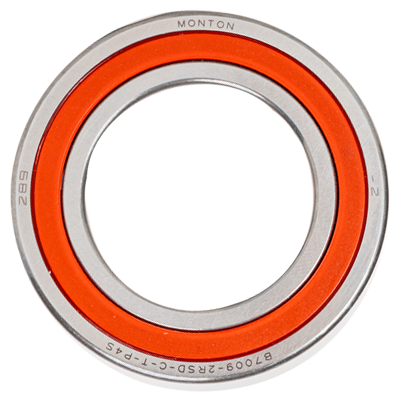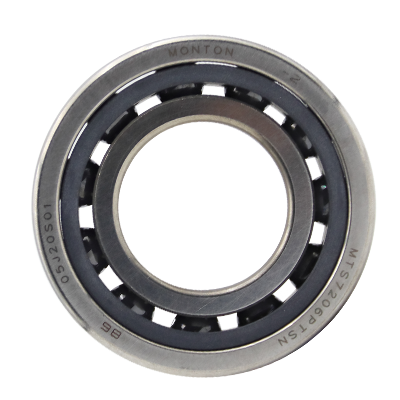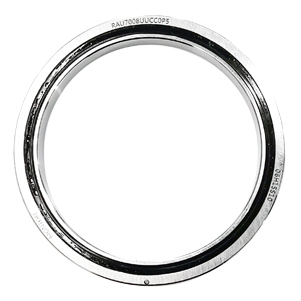Comparison of Bearing Tolerances And Precision Levels table
| Standards | Precision Grade | ||||
| GB | P0(G) | P6(E) | P5(D) | P4(C) | P2(B) |
| ISO | Normal Class | Class 6 | Class 5 | Class 4 | Class 2 |
| ANSI | ABEC 1 | ABEC 3 | ABEC 5 | ABEC 7 | ABEC 9 |
| DIN | P0 | P6 | P5 | P4 | P2 |
| JIS | 0 | 6 | 5 | 4 | 2 |
What Are Bearing Tolerance Classes?
Tolerance classes for ball bearings were defined by a committee within the ABMA known as the “Annular Bearings Engineers Committee” (ABEC). These tolerances are commonly referred to as ABEC rating, or grade. Tolerance classes for roller bearings are covered by the RBEC classifications contained within the same standard. These classes are defined in ABMA standard 20 – Radial Bearings of Ball, Cylindrical Roller, and Spherical Roller Types and ABMA standards 12.1 and 12.2 – Instrument Ball Bearings. The ABEC (and RBEC) tolerance classifications specify both tolerances of size and form for the individual inner and outer rings. The critical features of the rings include the bore (or inner diameter of the inner ring), the outer diameter of the outer ring, the ring widths, and the raceways of each ring. Tolerances of form include roundness, taper, runout, and parallelism.
What Are Instrument Series Ball Bearings?
ABMA standard 20 defines 5 classes: ABEC 1, ABEC 3, ABEC 5, ABEC 7, and ABEC 9. Instrument series ball bearings are defined in standards 12.1 and 12.2 and carry the suffix “P”. Extra thin and thin section ball bearings defined in standards 12.1 and 12.2 carry the suffix “T”. The higher the number of the classification, the tighter the tolerances become resulting in higher precision of the assembled bearing. When the classification system was first set up, machine tool technology was such that manufacturers mass-produced only ABEC 1, and sometimes ABEC 3. Bearings for the higher classifications were selected from the production runs of the lower classification. Today, the technology has advanced to the point where manufacturers can produce ABEC 7 and ABEC 9 bearings routinely.
While all bearings are extremely precise mechanisms, a designer must consider the benefits of tighter tolerances in terms of performance and bearing life. For example, there is a direct correlation between precision class and bearing life. Raceway parallelism, a feature controlled by ABEC, can impact bearing torque. A non-parallel raceway will result in torque spikes. In high-speed applications, bearing runout can result in an imbalance in the rotating mass. These conditions can lead to premature failure and unpredictable life. Of course, the higher precision levels have the downside of higher cost.
What Other Bearing Specifications Are Important?
While the bearing tolerance classes primarily control boundary dimensions of the rings, it should also be noted that there are features that are critical to the bearing's performance and life that are not controlled by the ABEC (or ISO) specifications. These include internal clearance, surface finish, ball accuracy, torque, noise, cage type, and lubrication. These items should be specified along with the precision class when selecting bearings to ensure optimum life and performance. In many cases, it is one of these features, not precision level, that when specified properly yields the desired performance and or life.
Many countries throughout the world have their own standards organizations. For example, Germany, Japan, Korea, Russia, and China are major bearing producers and all have industrial standards that cover the ball and roller bearings. In almost all cases, these standards are similar to or state equivalency with ISO 492. The table below shows the equivalent tolerance grades for three of the most common standards.
Which Tolerance Class Is Best For My Application?
The following tables list the actual ABEC and RBEC tolerances per ABMA Standard 20. The tables list tolerances for both inner and outer rings, in both inch and metric units. These tables are useful in determining sizes and tolerance for components, such as shafts and housings. The designer should always do a tolerance stack up study at both maximum and least material conditions when sizing components, particularly when designing for miniature ball bearings. Some tolerances have been omitted for clarity. Tolerances for tapered roller bearings can be found in ABMA Standard 19.1 and are not included in these tables.
Previous: Monton spindle bearings
Next: How to Choose the Right CNC Machine Tools for Bearing Manufacturing: An Ultimate Guide


 English
English Russian
Russian Chinese
Chinese









